James W. Moseley (August 4, 1931 – November 16, 2012)
Over his career, he exposed UFO hoaxers and engineered hoaxes of his own. He was best known for the newsletter ”Saucer Smear”.
Biography
The son of U.S. Army Major General George Van Horn Moseley, Moseley attended Princeton University for two years before dropping out. He became interested in UFOs following the 1947 claims of pilot Kenneth Arnold, but his interest deepened following the 1948 death of U.S. Air Force pilot Thomas Mantell in pursuit of a UFO.
For Moseley his flying saucer career began as a lark in 1953 when he drove across country and interviewed almost 100 UFO experts and eyewitnesses, including former president Harry S. Truman. In July, 1954, Moseley co-founded ”Saucer News”, a periodical known for its unorthodox, “freewheeling” (Clark, 2002) style. Beyond the fake feuds and occasional hoaxes, “Saucer News” actually featured serious UFO research and reporting. Moseley was, in fact, among the first to publicize evidence against the claims of leading “contactee” George Adamski.
”Saucer News” was sold to his good friend Gray Barker in 1968. Moseley became a regular lecturer on UFOs for several years and organized an annual national convention. In 1970, he founded a newsletter that went by several titles until Moseley settled on ”Saucer Smear” in 1981. He produced the newsletter irregularly, but tried to keep a monthly schedule in later years. He also authorized others to sell pdf issues and subscriptions from a website. Moseley never went online; never owned a computer. In fact, he continued to produce the print version of “Saucer Smear” on a regular portable electric typewriter, usually a Smith Corona. The publication, sent via snail mail in a regular #10 envelope to “non-subscribers,” typically had a joking, gossipy tone.
Moseley reported (Story, 1980; Clark, 2002) that over the years he accepted, then rejected, a number of explanations for UFOs. In roughly chronological order, he considered the extraterrestrial hypothesis; a secret weapon/aircraft hypothesis, psychic/supernatural/interdimensional hypotheses in the vein of John Keel or Jacques Vallee; deep skepticism; and agnosticism. According to Antonio Huneeus, “Moseley was critical and sarcastic regarding just about everything and everybody in ufology. Yet Jim did believe a core of the UFO phenomenon was real and truly unexplained after filtering out all the hoaxes, conspiracy theories, misidentifications and just plain nonsense that pervades much of the field.”
In 1984, Moseley established an antiques store in Key West, Florida. Moseley co-wrote a memoir with Karl T. Pflock, entitled ”Shockingly Close to the Truth!” (2002), in which he recounted “the fun he has had over the years pursuing tall tales and purported evidence of visitors from outer space.”
James Moseley died from cancer of the esophagus on November 16, 2012 at a hospital in Key West, Florida; he was 81 years old.
The “Straith” hoax letter
Moseley was long suspected of having co-created a phony 1957 letter as a prank against Adamski. After years of denying the charges, evading the subject, and hinting at responsibility, Moseley admitted to the hoax in 1985 (Clark, 2005; Moseley and Pflock, 2002).
In 1957, Barker acquired some blank U.S. Governmental letterhead stationery and envelopes from a friend. During an alcohol-fueled weekend, Moseley and Barker wrote seven letters, each using this official letterhead. Five of the letters were jokes to friends; only two of the letters were outright hoaxes, the Adamski letter and one to Moseley’s father.
The letter to Adamski was signed by the fictional “R.E. Straith”, a representative of the non-existent “Cultural Exchange Committee” of the U.S. State Department. Straith wrote that the U.S. Government knew that Adamski had actually spoken to extraterrestrials in a California desert in 1952, and that a group of highly placed government officials planned on public corroboration of Adamski’s story.
Adamski took great pride in the Straith letter, and publicized its contents. FBI agents investigated the letter, and, since none of the claims were genuine, asked Adamski to stop publicizing the letter. Adamski refused.
FBI agents also questioned Barker and Moseley about the matter, but no criminal charges were filed.
Moseley (often along with Barker) committed multiple UFO pranks, some of which are regarded as “hoaxes.”However, the Straith letter hoax appears to be the one most remembered by both Moseley’s fans and detractors.
Ralph Horton crash case
As part of his cross-country flying saucer quest in 1954, Moseley investigated the Ralph Horton flying saucer crash after finding it in the flying saucer file of the ”The Atlanta Journal-Constitution.” Moseley called the airport and confirmed that the object was a device used by the Air Force to determine wind velocity and direction. It was sent up attached to a balloon and tracked by radar, since radar beams were reflected by the object. Horton retrieved the object from where he had discarded it, and gave it to Moseley. Moseley lost the object. In later years, Moseley jokingly lamented that if he had held on to the object, then it might have been he instead of Pflock that cracked the Roswell UFO Incident (Moseley, Pflock 2002 pp 53–54).
“Jim Moseley was a unique personality that will never be replaced. He played the role of the joker, making a permanent social commentary about the state of ufology in America. He was an equal-opportunity cynic as the debunkers and skeptics were certainly not immune from his barbs. But underneath it all he was a good guy and he was also truly fascinated and baffled by the inside core of unexplained UFO incidents. His iconoclast style will certainly be missed.” – Antonio Huneeus
References
• Clark, Jerome (2005), The UFO Encyclopedia: The Phenomenon from the Beginning, Volume 2, L-Z (2nd ed.), Omnigraphics, ISBN 0-7808-0097-4
• Moseley, James W.; Pflock, Karl T. (2002), Shockingly Close to the Truth!: Confessions of a Grave-Robbing Ufologist, Prometheus Books, ISBN 1-57392-991-3
• Sheaffer, Robert, Psychic Vibrations, 2011, ISBN 978-1-4636-0157-7, pp. 41–43.
• Story, Ronald J. (editor) and J. Richard Greenwell (consulting editor), The Encyclopedia of UFOs, Garden City: Doubleday & Co, 1980, ISBN 0-385-13677-3
• http://copycateffect.blogspot.com/2012/11/moseley-obit.html. Link to article detailing Moseley’s death on November 16, 2012.
• A remembrance of Moseley by friend and fellow UFO investigator Antonio Huneeus.
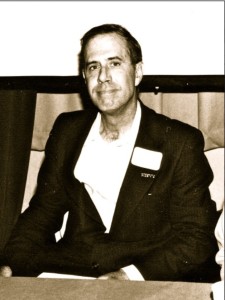
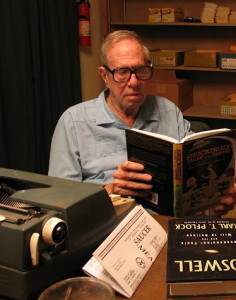
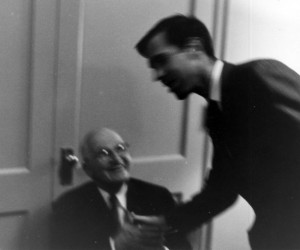
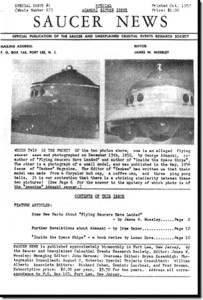
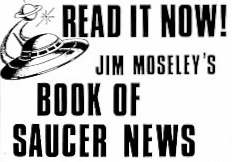
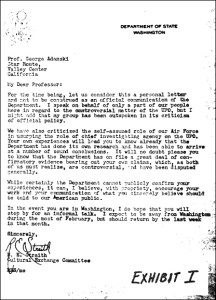
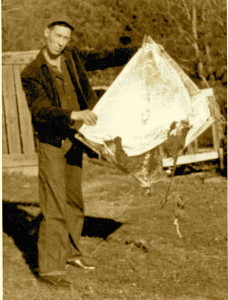
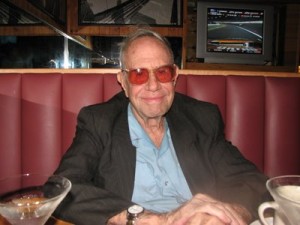
I very much regret that Jim and I were never able to resolve our differences, despite the fact that we traveled together, twice, to Ecuador and Peru, and followed several of the “huaqueros” in the desert as they probed about in the sand. Then, something occurred that alienated Jim, and we never spoke again. He was one of the most colorful, controversial, characters I ever met, and was several times a guest on my all-night New York radio show via WOR – now WWOR.
James Randi.